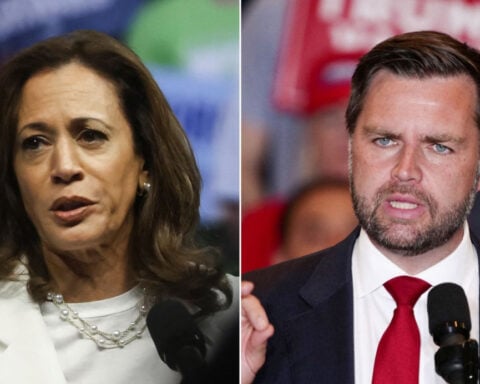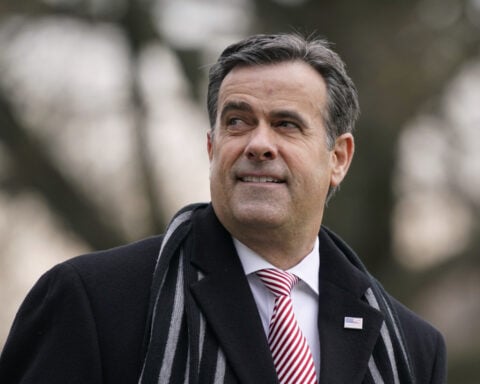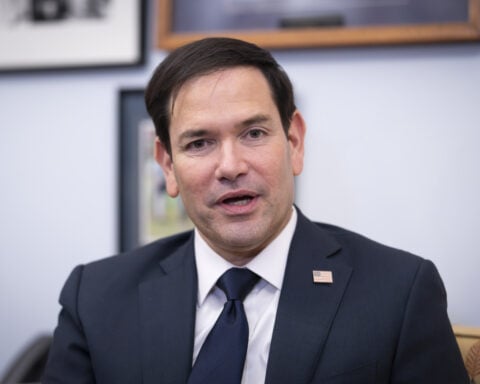By Harry Robertson
LONDON (Reuters) -A bond market crisis that rocked Britain's economy two years ago cast a long shadow over the country's election and will linger as Keir Starmer's Labour government finds its feet after a landslide election win.
Spooked by plans to slash taxes in September 2022 by the ruling Conservative Party's then-Prime Minister Liz Truss, who spectacularly lost her seat on Thursday, the scars of the bond rout remain.
Both parties avoided grand economic plans in the election campaign for fear of waking the bond market dragon. Labour used the episode, which also pushed sterling to record lows and jacked up mortgage rates, to successfully attack the Conservatives' economic record.
Starmer's party will now inherit one of the highest debt loads in UK history. Yet looming interest rate cuts could work in its favour.
The following five charts outline the sort of bond market awaiting the next government:
1) STILL-HIGH BORROWING COSTS
After the 2022 mini-budget crisis, Britain's 10-year bond yields soared to a 14-year high on fears about high levels of borrowing and as complicated pension fund investment strategies were caught in the meltdown. Yields rise as prices fall.
UK government bond yields fell slightly on Friday as prices climbed, although that was in line with other European countries.
The Bank of England stepped in to stabilise markets, yet 10-year gilt yields remain well above those in benchmark euro zone bond issuer Germany. That's largely because stickier UK inflation forced the BoE to hike rates to 5.25%, compared with 4% in the euro zone.
Yet there is some reason for optimism. Barclays analysts reckon the "idiosyncratic risks around gilts seem much less than in other markets", as the rise of the far right rocks France and unsettles Europe.
2) BRITAIN TESTS THE MARKET
Britain's borrowing needs, exacerbated by the COVID-19 crisis and the Ukraine war that sent energy prices soaring, remain high.
The 2024-25 financial year is set to be the second-highest for government debt issuance on record at 278 billion pounds ($350 billion). Pressure is unlikely to ease any time soon, even before new policies are considered.
Separately, the BoE is meanwhile cutting its bond holdings by 100 billion pounds a year, including through active sales - meaning more pressure on the market to soak up new debt and raising some concerns about financial stability.
3) RATE CUTS ARE COMING
The good news for Labour's Rachel Reeves, set to become Britain's first female finance minister, is that BoE rate cuts will likely start soon.
Inflation has slowed back to its 2% target amid tepid growth, and traders anticipate a first cut in August or September. Money market pricing suggests rates will fall by around 1.2 percentage points by the end of 2025.
"If you've got an economy that's slowing and interest rates are being cut ... you generally don't have a problem selling sovereign bonds," said Craig Inches, head of rates and cash at Royal London Asset Management.
4) SOLID DEMAND
Demand for Britain's bond sales has been strong, with record bids for one issue in March. Rate cut bets have made government bonds appealing - bond prices rise as rates fall, as older, higher-yielding debt becomes more attractive than new issuance.
Prospects for stability after a period of political and economic uncertainty has also boosted sentiment towards UK assets.
Yet Royal London's Inches said inflation may pick up in the coming years and rates could rise again.
"That type of environment, where you've got very high levels of supply in a rate-rising environment, with poor debt-to-GDP ratios, that becomes problematic," he said, adding that borrowing costs would have to rise.
5) UNCERTAIN INTEREST COSTS
Britain's interest payments on its debt has surged along with inflation and interest rates, hitting a post-war high of 111 billion pounds in 2022-23, or around 4.4% of gross domestic product.
One problem for the incoming government is that forecasts for the debt interest bill have bounced around along with market rate expectations. Although rates are expected to fall, how low they will go remains uncertain.
This means that interest spending "is likely to remain a major source of risk to the fiscal outlook," Britain's budget watchdog said in March.
($1 = 0.7914 pounds)
(Reporting by Harry Robertson; Editing by Dhara Ranasinghe, David Holmes and Gareth Jones)

 What to know about Trump's attorney general pick Pam Bondi as she faces questioning on Capitol Hill
What to know about Trump's attorney general pick Pam Bondi as she faces questioning on Capitol Hill
 Rubio vows to place US interests 'above all else' as Trump's top diplomat
Rubio vows to place US interests 'above all else' as Trump's top diplomat
 Manatees congregate in warm waters near power plants as US winter storms graze Florida
Manatees congregate in warm waters near power plants as US winter storms graze Florida
 Nippon Steel wants to work with Trump administration on US Steel deal, Mori tells WSJ
Nippon Steel wants to work with Trump administration on US Steel deal, Mori tells WSJ
 After cable damage, Taiwan to step up surveillance of flag of convenience ships
After cable damage, Taiwan to step up surveillance of flag of convenience ships
 BOJ will raise rates if economy, price conditions continue to improve, Ueda says
BOJ will raise rates if economy, price conditions continue to improve, Ueda says
 AAPI adults prioritize immigration, but split on mass deportations: AP-NORC/AAPI Data poll
AAPI adults prioritize immigration, but split on mass deportations: AP-NORC/AAPI Data poll
 As fires ravage Los Angeles, Tiger Woods isn't sure what will happen with Riviera tournament
As fires ravage Los Angeles, Tiger Woods isn't sure what will happen with Riviera tournament
 Antetokounmpo gets 50th career triple-double as Bucks win 130-115 to end Kings' 7-game win streak
Antetokounmpo gets 50th career triple-double as Bucks win 130-115 to end Kings' 7-game win streak
 Zheng loses to No 97 Siegemund, Osaka rallies to advance at the Australian Open
Zheng loses to No 97 Siegemund, Osaka rallies to advance at the Australian Open








